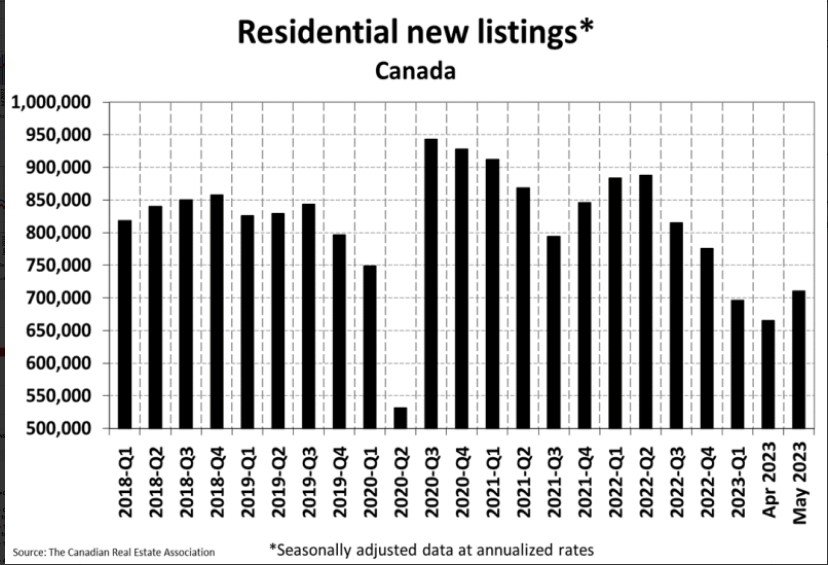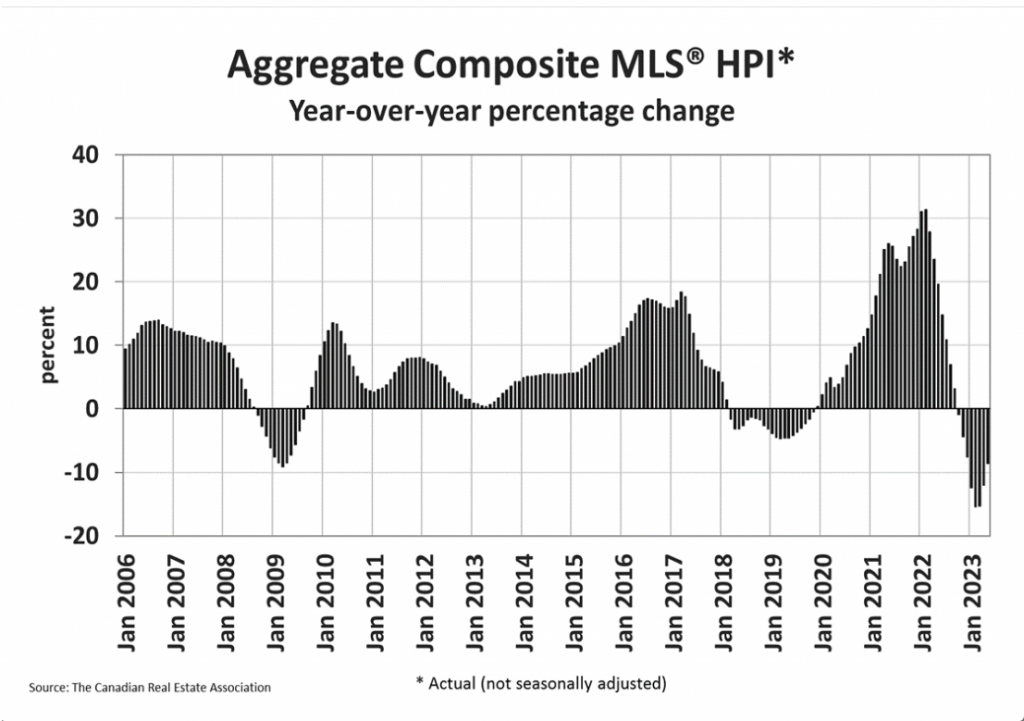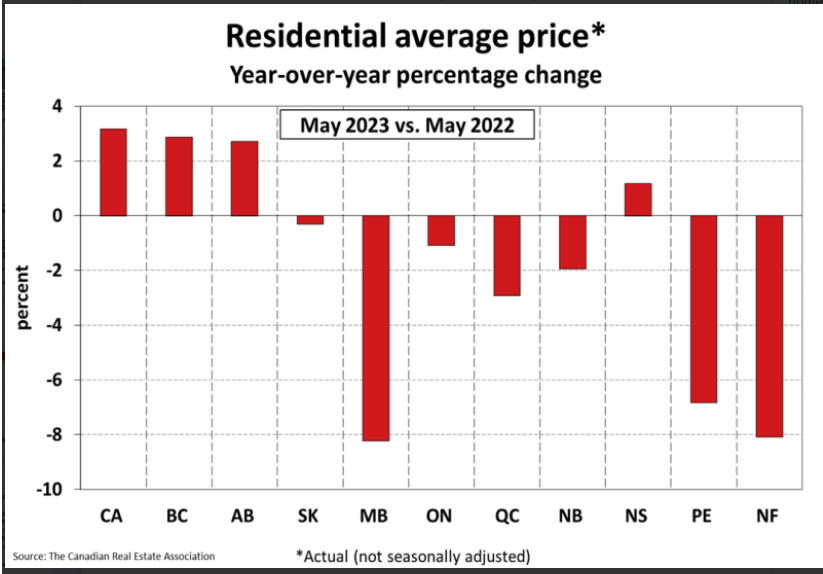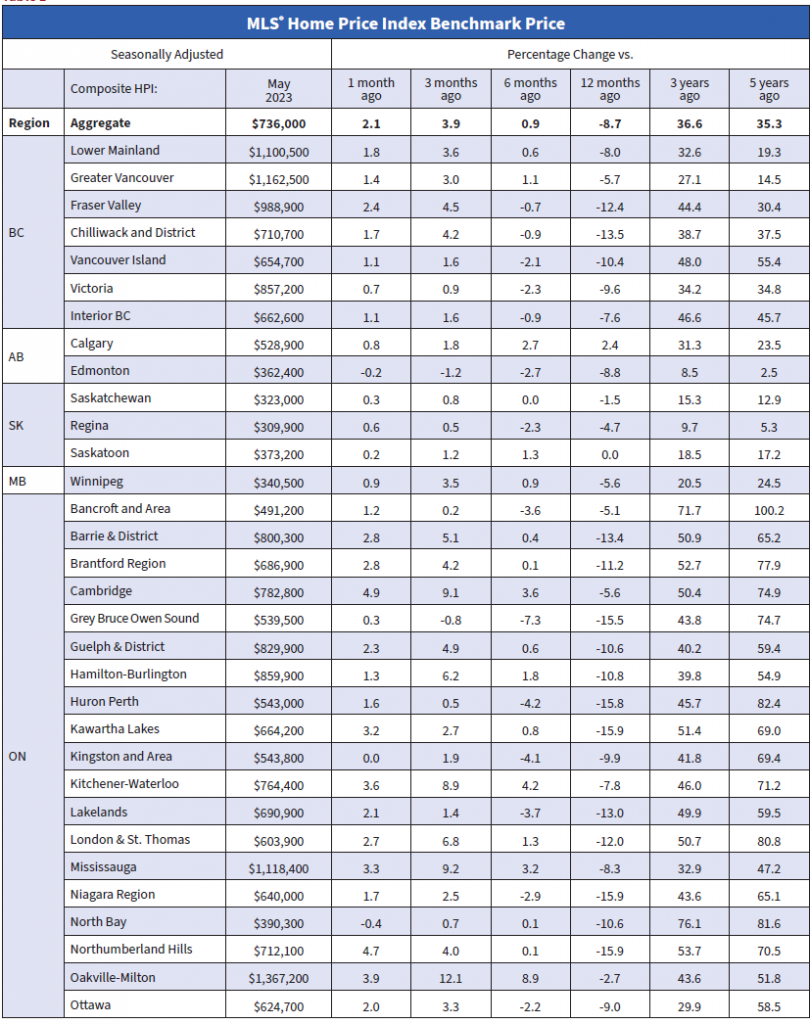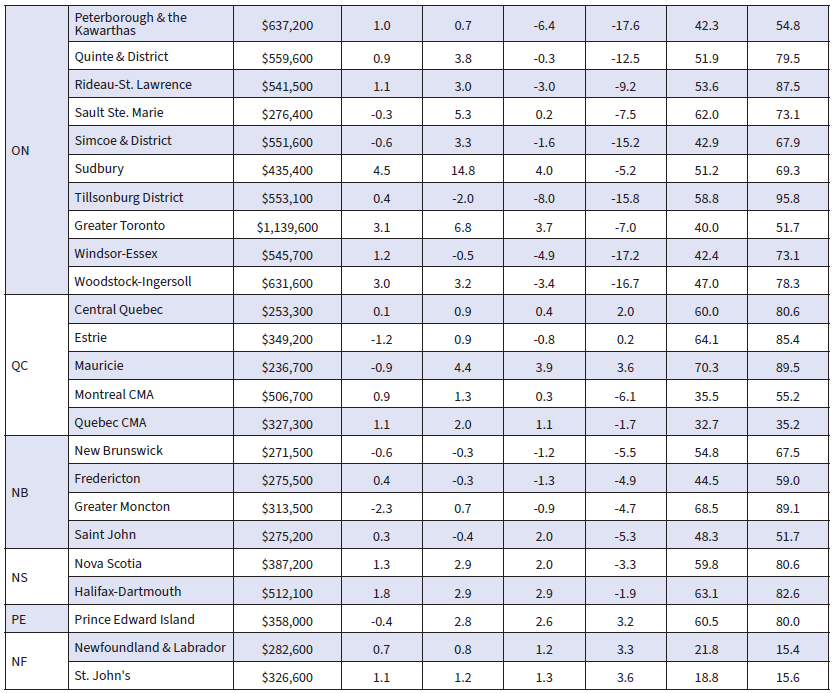Articles
Posted on June 15, 2023
Strong May Housing Market Likely Triggered Recent BoC Rate Hike
Strong May Housing Triggered BoC Rate Hike
The Canadian Real Estate Association says home sales in May rose 5.1% month-over-month (m/m), adding to the 11.1% gain in April. This brought the year-over-year sales gain to 1.4%, The first y/y sales increase in almost two years. While spring home sales started booming (compared to the past year), the surprising 25 bps uptick in the Bank of Canada’s policy rate has no doubt dampened enthusiasm in June. Indeed, the strength in housing may have been the deciding factor in the Bank’s decision.
Sales were up in about 70% of all local markets, including Canada’s largest markets: the Greater Toronto Area (GTA), Montreal, Greater Vancouver, Calgary, Edmonton, and Ottawa.

New Listings
The number of newly listed homes was up 6.8% month-over-month in May, although the bigger picture is that new supply is still running at historically low levels.
With sales and new listings up by similar magnitudes in May, the sales-to-new listings ratio was 67.9%, little changed from 69% in April. The long-term average for this measure is 55.1%.
There were 3.1 months of inventory on a national basis at the end of May 2023, down from 3.3 months at the end of April and down more than an entire month from the most recent peak at the end of January. The long-term average for this measure is about five months.
The dearth of sellers could reflect the reluctance of existing homeowners to give up their low-rate mortgages.
Home Prices
The Aggregate Composite MLS® Home Price Index (HPI) climbed 2.1% on a month-over-month basis in May 2023 – a significant increase for a single month and on the heels of a similar gain in April. Once again, it was also very broad-based, with a monthly price increase between April and May observed in most local markets.
The Aggregate Composite MLS® HPI now sits 8.6% below year-ago levels, a smaller decline than in the first four months of this year. The second chart below shows that year-over-year price gains are posted at the national level and in BC, Alberta, and Nova Scotia. With the strength in the GTA, y/y prices are fast approaching positive territory.
Bottom Line
The rate hike by the BoC has spooked the housing market. Anecdotal evidence suggests that activity has slowed, and the demand for fixed-rate mortgages has surged. Many households now face higher monthly payments in the next two years. The Bank of Canada knows that and wants to see household spending slow from the rapid Q1 pace. Consumer confidence has risen sharply since March. But with household debt-to-income levels at near-record highs, the sensitivity to interest rates is extreme.
Ironically, just as the BoC raised rates again after months of no action, the Federal Reserve decided to pause rate hikes for the first time this cycle. US inflation peaked at over 9.1% and fell to 4.0% in May. While Canadian inflation topped at 8.1%, its most recent posting was 4.4% in April. May data for Canada will be released on June 27.
Traders are currently expecting one more rate hike in Canada this year. The idea that the Bank would cut rates any time this year has vanished. Most are betting the first rate cut is more likely to be in mid-2024. We have learned that uncertainty prevails, but I’d bet that we will not return to pre-Covid interest rates for a very long time.
